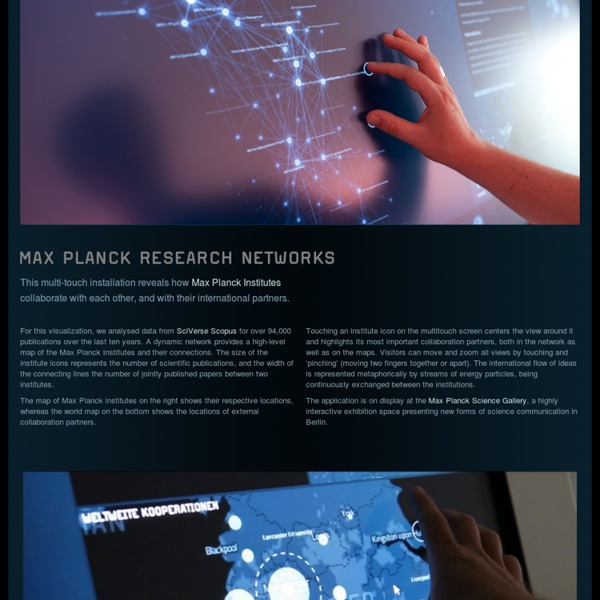Max Planck Research Networks

in|situ| - WILD
Emmanuel Pietriga & Michel Beaudouin-Lafon WILD is an experimental high-resolution, interactive platform for conducting research on collaborative human-computer interaction and the visualization of large datasets. Our primary target users are scientists from other disciplines, including astrophysicists, biologists, chemists, as well as computer scientists, to visualize, explore and analyze their data. Installed in February 2009, the platform was officially opened on June 19, 2009 (see WILD Inauguration). For more information, see the INRIA Web site and the Project page. Interaction and Collaboration WILD focuses on interaction, providing users with a 3D real-time motion capture system, multi-touch tabletop displays and other devices. Multi-scale Interaction lets users navigate through large and complex datasets by visualizing them at different scales. Participatory Design Technical Details Pictures Gallery © CNRS Phototheque / Cyril FRESILLON / ESA / Planck HFI & LFI Consortia Partners Funding
Related:
Related:



